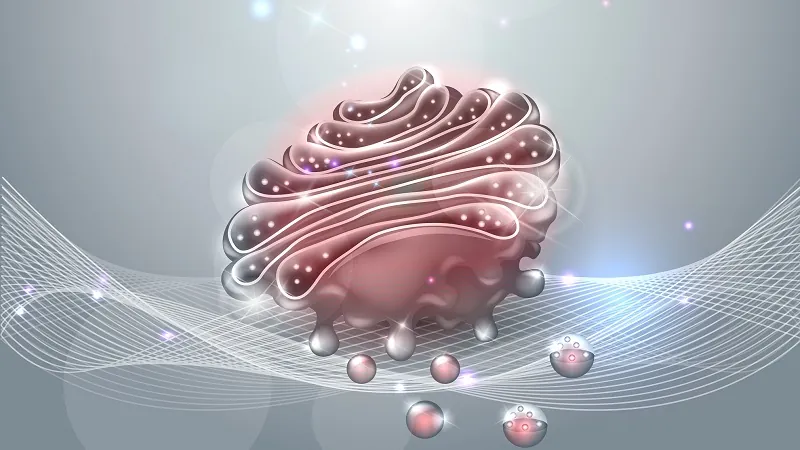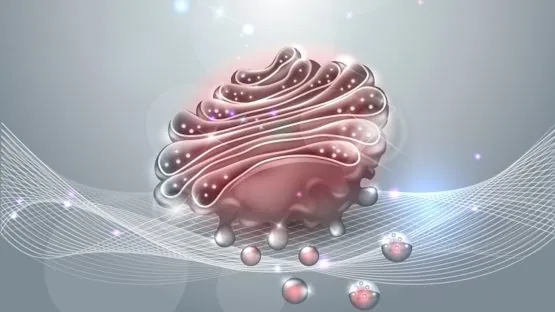A group of researchers has found that extracellular vesicles carrying a specific type of microRNA can attenuate age-related inflammation and increase immune response following flu vaccination in mice [1].
Extracellular vesicles (EVs) are an important part of intercellular communication. These tiny nanoscale bubbles are secreted by cells into the intercellular space and can carry various types of molecular cargo. EVs then get engulfed by other cells, sometimes by the same cells, where the cargo elicits a desired response. Now, a group of scientists has discovered that EVs may be related to inflammaging and used to control it.
MicroRNAs – tiny but important
Among the types of cargo that EVs deliver are microRNAs (miRNAs): small non-coding RNA molecules. Their main role is the post-transcriptional regulation of gene expression. Recent studies have shown that some miRNAs carried by EVs have immunoregulatory properties [2]. In 2018, the authors of today’s paper found that EVs carrying immunoregulatory miRNAs regulate the inflammatory response of macrophages to stimulation with whole virus particles (WVPs). WVPs form the backbone of some vaccines, such as flu vaccines. This suggests that EVs can potentially improve our response to vaccination.
This time, after exploring more than a dozen miRNAs that were overexpressed in the EVs of aged mice, the researchers zeroed in on miRNA-192, a specific miRNA molecule that was found to be related to the expression of some inflammatory cytokines, particularly interleukin-6 (IL-6), in macrophages, the immune cells that are potent regulators of inflammation.
Cellular self-help
As it turns out, the relation of miRNA-192 to IL-6 is a negative feedback loop. On one hand, IL-6 knockout mice (genetically modified mice unable to produce IL-6) have lower levels of miRNA-192 in EVs, while intravenous administration of IL-6 leads to increased levels of miRNA-192. These two results suggest a positive correlation. On the other hand, direct administration of miRNA-192 to macrophages leads to a decrease in IL-6 expression, which suggests a negative correlation. So, the age-related increase in IL-6 leads to more miRNA-192 in EVs, which, in turn, leads to partial attenuation of IL-6 overexpression. The researchers also suggest that this process is “autocrine-like”: macrophages themselves release EVs containing miRNA-192 and are affected by those same EVs, much like a burning building with its own fire brigades. Of course, this mechanism is far from perfect; otherwise, we would not be experiencing inflammaging at all.
MiRNA-192 improves vaccination response
As their next step, the researchers wanted to see whether EVs carrying miRNA-192 can affect the murine immune response to a flu vaccine by lowering inflammation. They found that administrating EVs loaded with miRNA-192 reduced both local inflammation caused by the vaccination and prolonged systemic inflammation. Although the miRNA-192 treatment did not seem to decrease murine susceptibility to flu following the vaccination, it did significantly improve the survival outcomes of the infected animals, which could indicate therapeutic potential for miRNA-192 EV treatment.
IL-6-knockout mice produced more specific antibodies in response to the vaccination. On the other hand, they were also more susceptible to infection, as if IL-6 had two opposite effects. This shows yet again that optimal antiviral protection requires just the right amount of inflammation, while too little or too much inflammation both have detrimental effects.
This path is still far from being fully explored. As the scientists note, several other EV-carried miRNAs were upregulated in aged mice. Some of these miRNAs, according to previous studies, also control inflammation; for instance, miRNA-322, which targets NF-κB, a major regulator of inflammatory response, can become the next object of research [3].
Conclusion
The researchers showed that EVs carrying miRNA-192 can attenuate inflammatory responses and improve vaccine efficacy in aged mice. This finding is consistent with the theory that age-related excessive inflammation can hurt vaccine efficacy. Hence, mitigating inflammaging, in addition to having beneficial effects on several hallmarks of aging, can also potentially shield elderly people from infectious diseases.
Literature
[1] Tsukamoto, H., Kouwaki, T., & Oshiumi, H. (2020). Aging-associated extracellular vesicles contain immune regulatory microRNAs alleviating hyperinflammatory state and immune dysfunction in the elderly. iScience, 101520.
[2] Alexander, M., Hu, R., Runtsch, M. C., Kagele, D. A., Mosbruger, T. L., Tolmachova, T., … & O’Connell, R. M. (2015). Exosome-delivered microRNAs modulate the inflammatory response to endotoxin. Nature communications, 6(1), 1-16.
[3] Zhang, K., Song, F., Lu, X., Chen, W., Huang, C., Li, L., … & Dai, H. (2017). MicroRNA-322 inhibits inflammatory cytokine expression and promotes cell proliferation in LPS-stimulated murine macrophages by targeting NF-κB1 (p50). Bioscience reports, 37(1).




